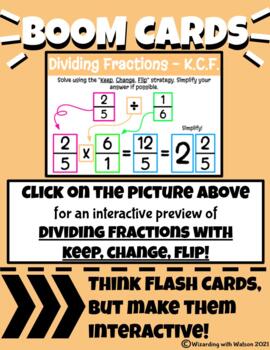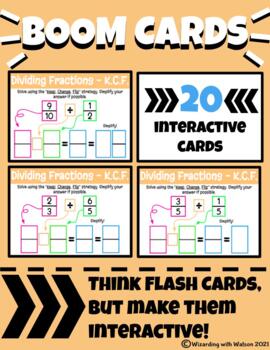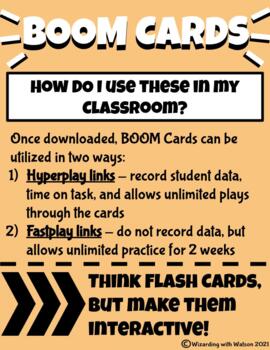Dividing Fractions with Keep, Change, Flip - Boom Cards
Wizarding with Watson
17 Followers
Grade Levels
4th - 7th
Subjects
Resource Type
Standards
CCSS5.NF.B.7a
CCSS5.NF.B.7b
CCSS5.NF.B.7c
CCSS6.NS.A.1
Formats Included
- PDF
Wizarding with Watson
17 Followers
Description
Using these Boom Cards, help your students solve fraction division problems using the "keep, change, flip" strategy! Students are given a division equation and are asked to re-type the first fraction, change division to multiplication, find the reciprocal of the second fraction, then multiply and simplify to lowest terms.
In this deck: 20 division problems with whole number, mixed number, and fraction quotients simplified to lowest terms.
Standard:
Apply and extend previous understandings of division to divide fractions.
22.NF.7 Use the relationship between multiplication and division to explain that (1/3) ÷ 4 = 1/12 because (1/12) x 4 = 1/3)
Total Pages
Answer Key
N/A
Teaching Duration
N/A
Report this resource to TPT
Reported resources will be reviewed by our team. Report this resource to let us know if this resource violates TPT’s content guidelines.
Standards
to see state-specific standards (only available in the US).
CCSS5.NF.B.7a
Interpret division of a unit fraction by a non-zero whole number, and compute such quotients. For example, create a story context for (1/3) ÷ 4, and use a visual fraction model to show the quotient. Use the relationship between multiplication and division to explain that (1/3) ÷ 4 = 1/12 because (1/12) × 4 = 1/3.
CCSS5.NF.B.7b
Interpret division of a whole number by a unit fraction, and compute such quotients. For example, create a story context for 4 ÷ (1/5), and use a visual fraction model to show the quotient. Use the relationship between multiplication and division to explain that 4 ÷ (1/5) = 20 because 20 × (1/5) = 4.
CCSS5.NF.B.7c
Solve real world problems involving division of unit fractions by non-zero whole numbers and division of whole numbers by unit fractions, e.g., by using visual fraction models and equations to represent the problem. For example, how much chocolate will each person get if 3 people share 1/2 lb of chocolate equally? How many 1/3-cup servings are in 2 cups of raisins?
CCSS6.NS.A.1
Interpret and compute quotients of fractions, and solve word problems involving division of fractions by fractions, e.g., by using visual fraction models and equations to represent the problem. For example, create a story context for (2/3) ÷ (3/4) and use a visual fraction model to show the quotient; use the relationship between multiplication and division to explain that (2/3) ÷ (3/4) = 8/9 because 3/4 of 8/9 is 2/3. (In general, (𝘢/𝘣) ÷ (𝘤/𝘥) = 𝘢𝘥/𝘣𝘤.) How much chocolate will each person get if 3 people share 1/2 lb of chocolate equally? How many 3/4-cup servings are in 2/3 of a cup of yogurt? How wide is a rectangular strip of land with length 3/4 mi and area 1/2 square mi?




